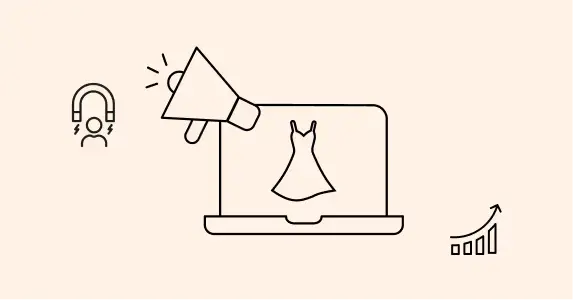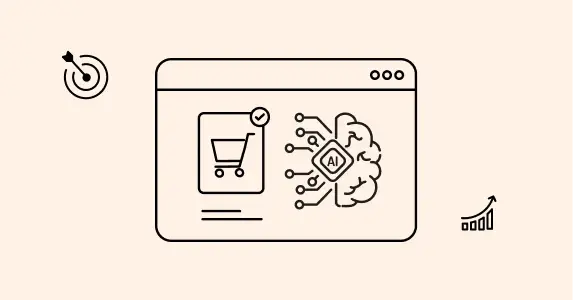Personalization has moved from a competitive advantage to a consumer expectation. Particularly in the health and beauty industry, where individual needs, concerns, and aspirations drive purchasing decisions, a one-size-fits-all approach simply doesn’t work.
Recent data reveals that 88% of skincare and cosmetics shoppers expect tailored experiences, and a significant majority will disengage with brands that fail to deliver. So, while innovative product formulations and appealing brand aesthetics are crucial, they are merely the starting point.
To transform curious visitors into loyal customers—and loyal customers into advocates—you need a marketing strategy that accompanies the individual’s journey at every interaction. This is where lifecycle marketing comes in.
Lifecycle marketing centers on providing timely, relevant, and personalized communication at each stage of the customer’s journey—from initial awareness to unwavering loyalty. When executed effectively, it not only boosts conversions but also enhances the entire customer experience. Brands embracing this approach are witnessing up to 40% more website conversions and a 3.5X improvement in marketing ROI.
Let’s delve into nine essential strategies that will empower your health and beauty brand to flourish with lifecycle marketing—fueled by predictive personalization.
1. Understand Their Unique Needs: Build Comprehensive Customer Profiles
A profound understanding of your customer is the bedrock of any successful lifecycle marketing strategy. This begins with constructing a comprehensive customer profile—a 360-degree view that integrates data from all their engagements with your brand.
This encompasses:
- Behavioral data: What product categories do they browse (e.g., anti-aging, acne solutions, hair care)? Which ingredients or concerns do they frequently research? What routines or tutorials do they view?
- Demographic & Psychographic data: Who are they? Age range, skin type, hair type, concerns (e.g., sensitive skin, oily scalp), lifestyle preferences (e.g., vegan, organic).
- Purchase history: What products have they bought? How frequently? What combinations do they purchase?
The challenge lies not just in gathering this data but in connecting the dots effectively. AI-powered platforms like ours excel here. By analyzing these data points in real time, we can build dynamic profiles that continuously evolve, enabling you to anticipate customer needs and personalize interactions across all channels.
Example: If a customer consistently researches products for dry, sensitive skin and purchases hydrating serums and gentle cleansers, AI can curate content featuring new products with similar ingredients or routines tailored for their skin type, even before they actively search.
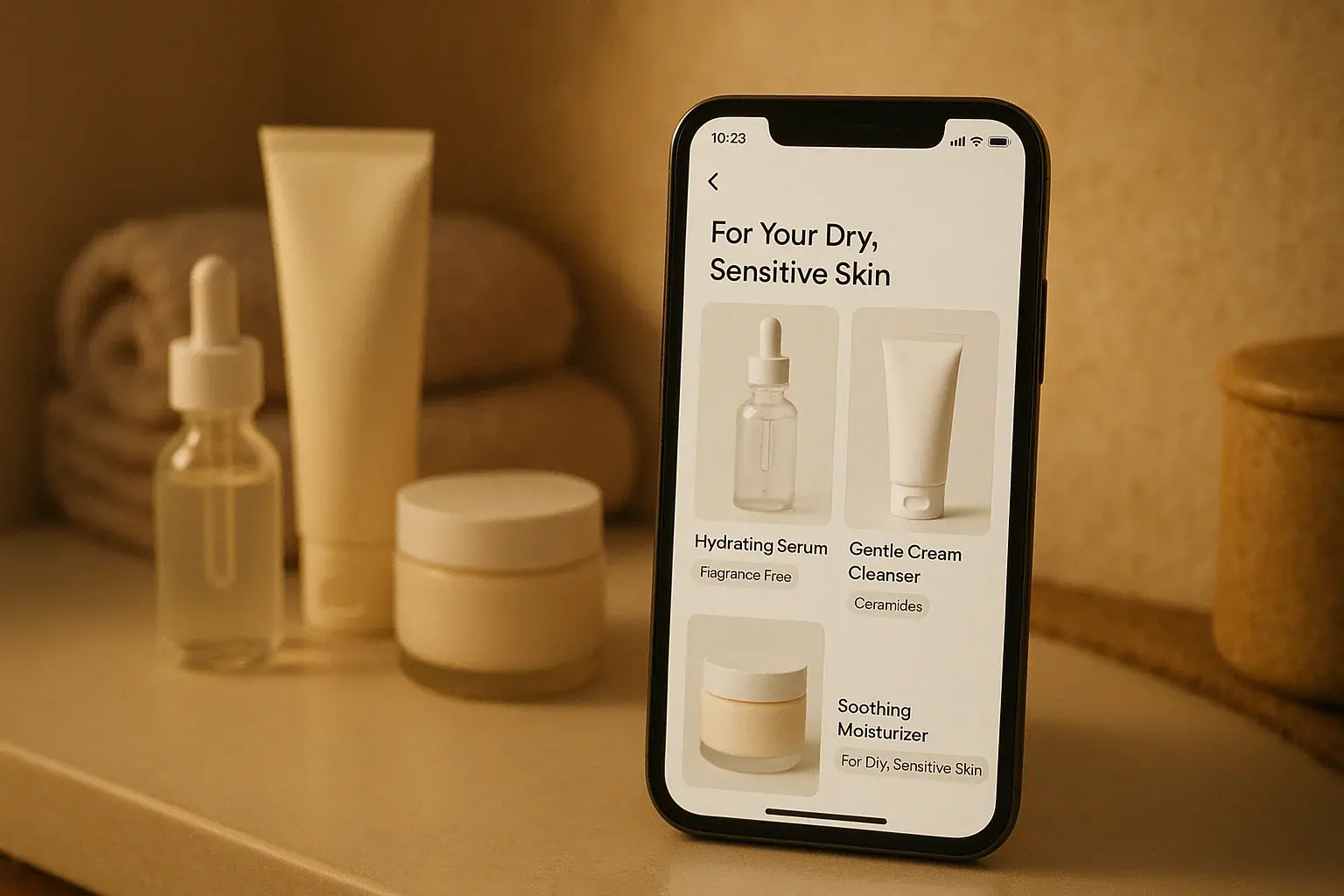
Did you know? A leading North American retailer beat the dearth of a proper segmentation practice with beautifully engineered cohorts and experiences via Netcore for their shoppers. The result? A 94x surge in engagement. Read how they did it!
2. Guide Their Discovery: Intelligent Search & Recommendations
Customers who utilize search are 2.5X more likely to convert in the health and beauty sector. This is because a search indicates a specific need or interest. However, they will likely abandon their search if the search experience is cumbersome, generic, or irrelevant.
This underscores why personalized, AI-driven search is a high-impact improvement for health and beauty retailers.
What Makes Search Effective?
- Concern-based understanding: Recognizing the underlying need behind the query—e.g., searching “redness relief” implies a need for soothing products.
- Personalized affinity: Incorporating past interactions into results—like showcasing products suitable for their skin type or addressing previously expressed concerns.
- Smart suggestions: Accelerating the search with predictive prompts based on their history and trending health/beauty queries.
UNBXD Search offers advanced features like:
- Dynamic filters: Adjusting based on the specific health or beauty concern being searched (e.g., “paraben-free,” “for oily hair”).
- Visual merchandising: Aligning search results with high-converting placements and relevant visuals (e.g., before-and-after photos).
- Search recommendations: Suggesting related products like “often purchased with” or “solutions for similar concerns.”
Example: A customer types in “acne treatment.” Instead of a generic list, they see “gentle formulas for sensitive skin,” “spot treatments with salicylic acid,” or “products recommended by users with similar skin types.” Brands that implement intelligent search have reported a 25% increase in AOV and growth in search-driven conversions.
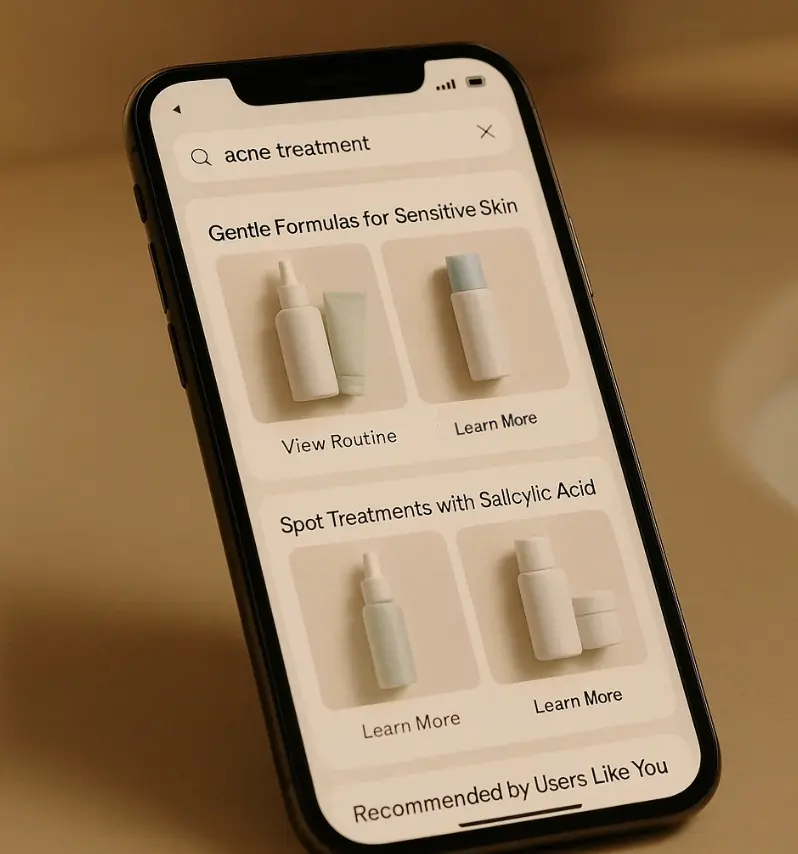
3. Re-engage Interested Shoppers: Abandoned Cart & Browse Reminders
Cart and browse abandonment are common challenges in health and beauty ecommerce, yet they represent highly engaged individuals. Lifecycle marketing employs targeted reminders to re-engage these users before their interest fades.
How to Win Them Back:
- Abandoned cart emails: Sent within hours of leaving items, including product details and potential discounts or free samples.
- Browse abandonment triggers: Personalized emails based on viewed products, even if they were never added to the cart, perhaps highlighting key benefits or ingredients.
- Urgency-driving messages: Use scarcity alerts like “Limited stock remaining!” or notifications about expiring promotions.
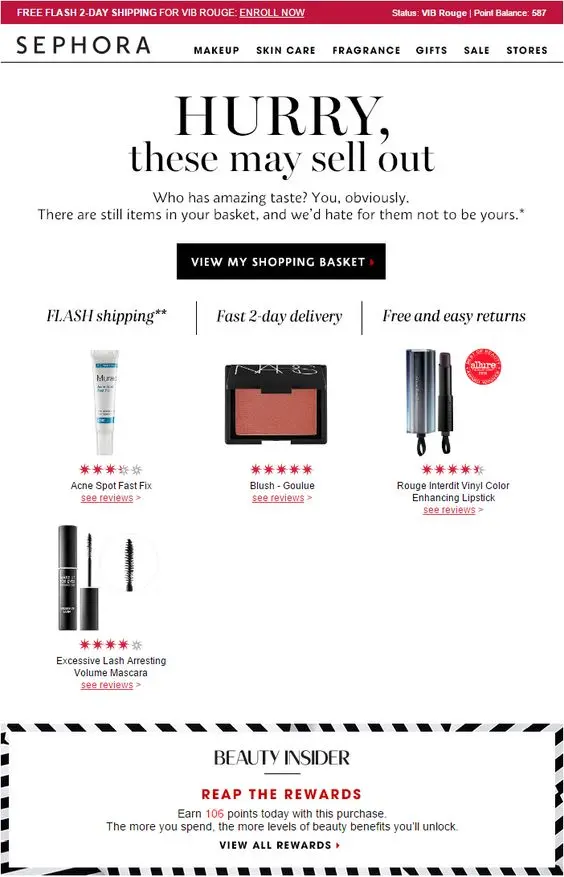
4. Anticipate Their Needs: Predictive Personalization for Routine & Replenishment
This is where predictive personalization truly transforms the customer experience. Instead of reacting to past behavior, predictive models forecast future needs, delivering the right message at the right time based on AI-driven insights.
You can leverage this to:
- Segment customers: Based on predicted repurchase likelihood, risk of abandoning their routine, or affinity for specific product types or ingredients.
- Send dynamic emails and messages: Featuring personalized recommendations for refills, complementary products, or relevant new releases.
- Plan promotions and retargeting: Based on predictive scores indicating the optimal time for re-engagement.
Example: A customer regularly purchases a specific brand of face wash every 60 days. Predictive personalization can trigger an automated reminder email with a restock offer a few days before the anticipated repurchase date.
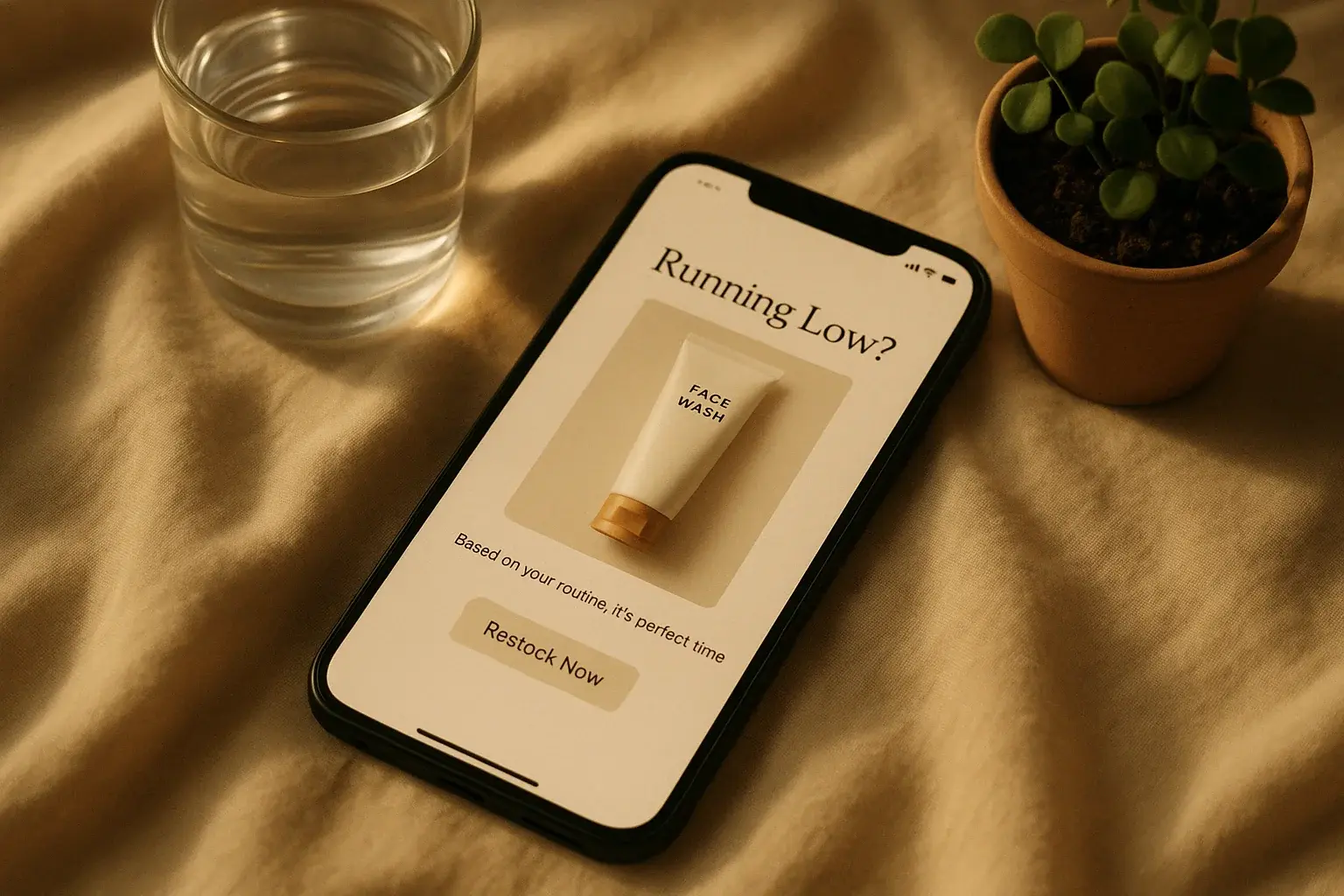
5. Connect Directly: Personalized Mobile App Push Notifications
Push notifications offer a direct communication channel with your most engaged audience—especially on mobile. However, generic push messages are often ignored or lead to app uninstalls.
Instead, utilize real-time, personalized push notifications based on behavioral cues.
Send messages like:
- “Hi [Name], your favorite sunscreen is running low! Reorder now for free shipping.”
- “New serums formulated for your skin type have just arrived!”
- “Don’t miss out! 15% off all hair masks ends tonight.”
Timing is crucial. For example, if a customer frequently views hair growth products, a notification about a limited-time sale on related items could be highly effective.
6. Curate Their Digital Experience: Personalized Web & App Displays
Think of your website or app as a personalized consultation. In a physical store, a beauty advisor might guide a customer towards products suited for their skin concerns. You can replicate this online by curating personalized screens.
With lifecycle marketing, you can dynamically tailor:
- Homepages: Displaying product categories or specific items relevant to their past browsing or purchase history in visually appealing layouts.
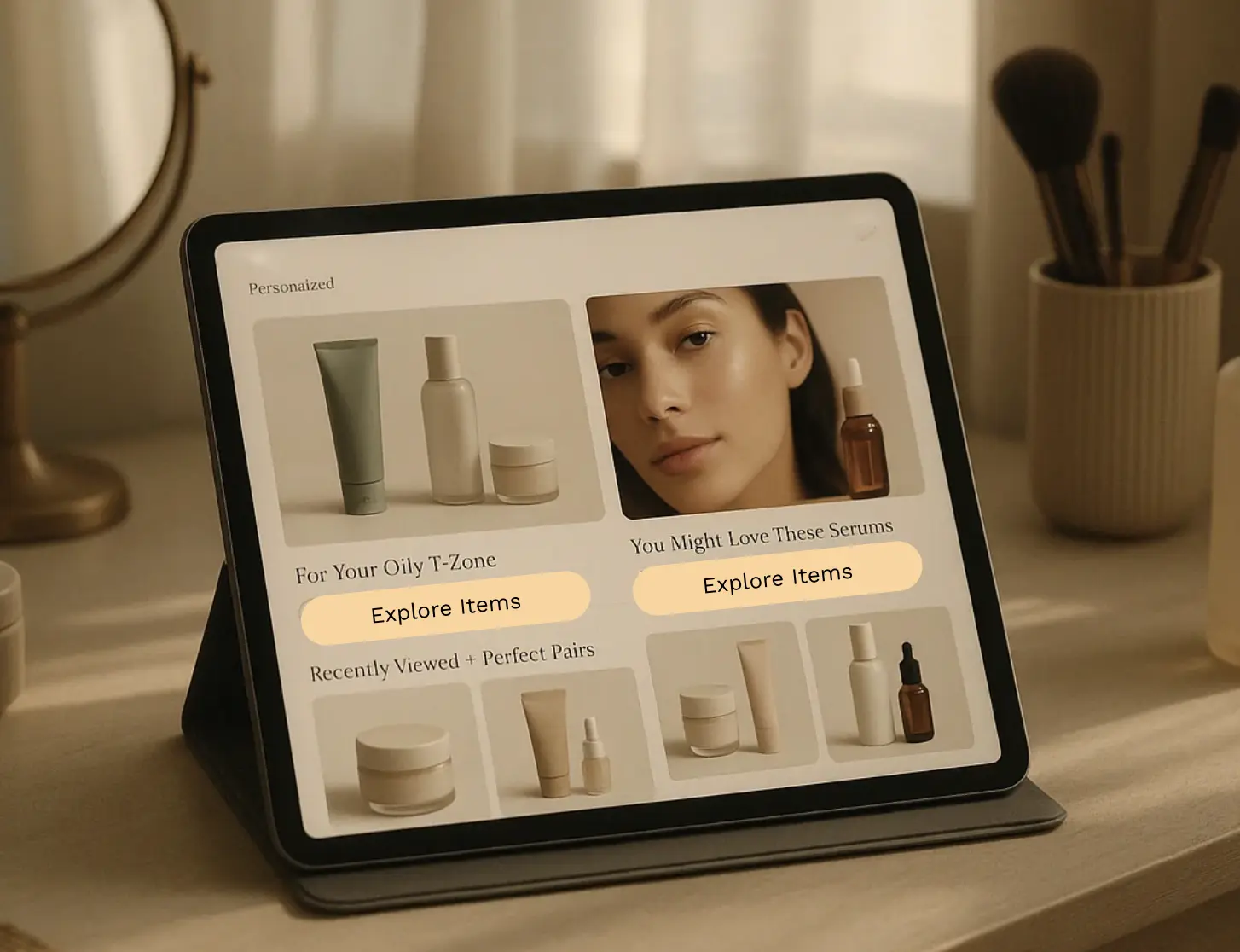
- Product listings: Filtered automatically to show products for their skin type, hair type, or preferred ingredients.
- Cart page recommendations: Suggesting complementary items to enhance their routine or address related concerns (“complete your regimen” or “users with this item also bought”).
- Landing pages: Customized for specific segments, such as new subscribers interested in a particular concern or VIP customers receiving exclusive offers.
- Geographic personalization can also be effective—showcasing products suitable for the local climate or promoting in-store events nearby.
7. Make Email Shoppable: Seamless In-Inbox Interactions
Emails don’t have to redirect customers to your website to make a purchase. With Shoppable Emails, customers can browse, interact, and even add items to their cart—all within their inbox.
You can:
- Embed product carousels: Showcasing curated selections based on their preferences.
- Display live stock levels: Creating a sense of urgency for popular items.
- Allow users to select product attributes: Like shade or size, directly within the email.
- Include interactive polls or quizzes: To gather further preference data and boost engagement.
The result? Reduced bounce rates and faster conversions. These emails function as mini-shopping experiences.
Bonus: Use real-time behavior to trigger these emails—like sending a carousel of “new arrivals for oily skin” after a relevant site visit.
Did you know? A leading health and beauty brand leveraged these exact technologies to increase their conversion rates by folds. Learn how they did it!

8. Foster Loyalty Through Lifecycle Milestones
Your most valuable customers are those who consistently return. Lifecycle triggers help cultivate this loyalty by nurturing customers at key points in their journey.
Examples include:
- Welcome sequences: Introducing your brand’s philosophy, key product lines, and offering exclusive discounts for new subscribers.
- Routine anniversary emails: Celebrating their continued use of your products and offering a special reward.
- Birthday or self-care day emails: With personalized offers or recommendations for a pampering experience.
- Replenishment reminders for frequently used items: Ensuring they don’t run out of their essentials.
Each trigger reinforces your brand’s value and encourages ongoing engagement, ultimately increasing Customer Lifetime Value (CLTV).
9. Continuously Refine: A/B Testing Your Personalized Experiences
No marketing strategy is static. A/B testing allows you to optimize your approach by testing different variations of:
- Email subject lines: To maximize open rates.
- Product recommendations: To identify the most effective suggestions.
- Call-to-action (CTA) wording: To drive higher click-through rates.
- Website and app layout: To improve user experience and conversions.
- Timing and frequency of messages: To find the optimal engagement cadence.
Example: Test whether your audience responds better to “Discover Your Perfect Skincare Routine” versus “Personalized Skincare Recommendations.” Or see if highlighting ingredient benefits over price influences purchase decisions.
Modern platforms like Nercore Cloud provide intuitive interfaces to facilitate testing, even for non-technical teams. And because personalization is dynamic, continuous testing ensures your strategies remain effective.
The Final Glow: Why Predictive Personalization is the Future of Health & Beauty Marketing
Health and beauty are deeply personal, and so should your marketing be. Lifecycle marketing, powered by predictive personalization, ensures that every individual feels understood, valued, and inspired at every stage of their journey with your brand.
The results speak for themselves:
- 88% of health and beauty shoppers expect personalized experiences.
- Brands see up to 40% higher website conversions.
- Marketing ROI improves by 3.5X.
This isn’t just about keeping pace—it’s about leading the way in the evolving landscape of health and beauty retail.
Ready to Enhance Your Health & Beauty Brand’s Marketing?
Discover how top brands are achieving significant ROI with predictive personalization and lifecycle marketing. [Book a demo] and learn how Netcore’s AI-powered platform can help you create personalized journeys that convert, retain, and scale your health and beauty business.
 Holiday Sales Are Won Now — Grab the 2025 Holiday Marketing Guide to Unlock More Revenue.
Holiday Sales Are Won Now — Grab the 2025 Holiday Marketing Guide to Unlock More Revenue. 








